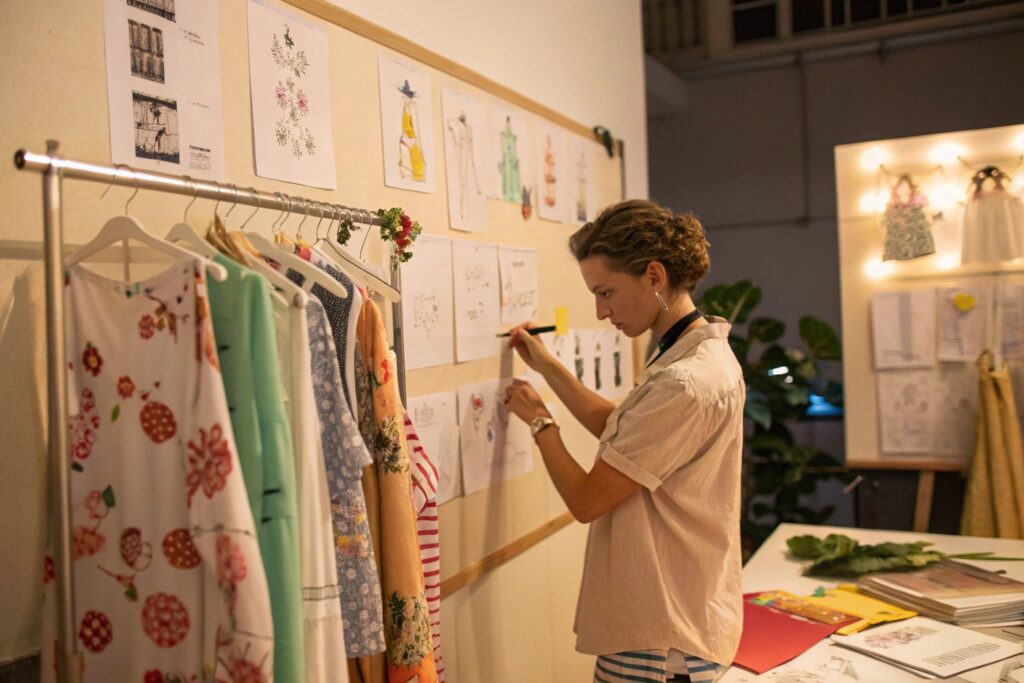Most brands launch capsules. Few know what to do next. Without clear feedback loops, they miss out on massive growth potential.
You can turn capsule feedback into full kidswear lines by tracking buyer behavior, collecting product-specific insights, and expanding only what proves demand.
If you want to go from small-batch tests to bestselling collections with confidence, you need a system. Here’s how I guide brands—based on real feedback, not guesswork.
How to Analyze Customer Feedback from Kidswear Capsules?
Customer feedback isn’t just reviews. It’s everything from returns and reorders to social comments and DMs.
To analyze capsule feedback, monitor qualitative responses, return reasons, customer reviews, and post-launch surveys—then group the data into themes.

What channels are best for collecting high-quality feedback after a capsule launch?
Start with your post-purchase email flow. Ask one simple question: “What did you love or want us to improve?” Keep it short, open-ended, and human. At Fumao Clothing, we help brands set up this flow right after shipping confirmations.
Then monitor customer messages. Comments like “wish this came in bigger sizes” or “my son wears this nonstop” offer huge clues. Screenshot and store them. If you’re working with influencers, check the content under their capsule posts. That’s where emotional responses show up.
Return data also tells a story. If one piece has 10x more returns, you need to investigate fit, fabric, or finish.
How can you organize customer feedback into useful, decision-ready insights?
Sort responses into themes. For example:
| Category | Sample Insights |
|---|---|
| Sizing | "Runs small for toddlers" / "Need more 5T options" |
| Fabric | "Love the softness!" / "Too thick for spring" |
| Style | "Please make matching leggings!" / "The zip gets stuck" |
| Occasion | "Perfect for playdates" / "Wore it to grandma’s birthday" |
Once you categorize comments like this, patterns emerge. You’ll see exactly what worked—and what didn’t. That’s your blueprint for scaling.
Top Metrics to Validate Demand for Full Kidswear Lines?
Gut feelings don’t scale brands. Data does. To know what’s worth growing, track the right capsule metrics.
The top metrics to validate demand are sell-through rate, repeat order percentage, cart composition, and engagement-to-purchase ratios.

Why is sell-through rate the most critical metric for capsule validation?
Because it shows product velocity. A sell-through rate above 70% in the first two weeks is a clear sign of demand. At Fumao Clothing, we benchmark capsule success based on this metric.
Let’s say you release 300 units. If you sell 240 in 10 days, the item is working. If you only sell 80, it may not be the right fit—literally or conceptually.
This tells you which SKUs deserve a spot in your permanent line—and which need a redesign or retirement.
What secondary metrics help confirm if a capsule product is worth expanding?
Other powerful metrics include:
- Repeat Order Rate: If customers come back for more, it means satisfaction.
- Average Order Value (AOV): Did the capsule increase overall spend?
- Bundling Behavior: Are people buying items together? If so, build sets.
- Low Return Rate: Fewer returns suggest the product met or exceeded expectations.
- UGC Volume: Are parents posting their kids wearing the item? Organic content = true brand love.
These metrics form a feedback web. The more touchpoints point to “yes,” the safer it is to scale.
When to Scale a Capsule into a Complete Collection?
You don’t scale based on sales alone. You scale when there’s sustained demand across styles, sizes, and customer segments.
You should scale a capsule when it shows strong early sell-through, low return rates, high engagement, and repeated customer requests for more variations.

What signals suggest a capsule is ready to become a full seasonal or signature collection?
Look for this pattern:
- Capsule sells 70%+ within 14 days.
- Customers reorder or ask for restocks.
- Reviews are overwhelmingly positive, with specific praise (e.g., “perfect fit,” “great quality,” “wish it came in more colors”).
- Influencers ask to keep the samples or tag you organically.
- The drop increases your email list, followers, or DMs asking “what’s next?”
When these five boxes are checked, it’s time to expand.
We worked with one brand that launched a 3-piece spring capsule. Parents raved about the floral print dress. So we built a full “Bloom” collection: 8 styles in matching prints, across baby to age 8. It became their highest-grossing quarter ever.
How should you structure the transition from capsule to full collection?
Think modular. Take what worked and build around it. If a dress performed, make a romper, skirt, and blouse in the same fabric. If the hoodie was a hit, offer a pullover and joggers.
Here’s a structure we use:
| Capsule Piece | Expansion Ideas |
|---|---|
| T-shirt | Long sleeve, tank, matching pants |
| Romper | Same print dress, two-piece set |
| Hoodie | Zip version, jogger, sweatshirt |
Stay in the same color story. This creates mix-and-match looks, upselling opportunities, and visual cohesion.
Using Sell-Through Data to Expand Kidswear Offerings?
Your capsule’s sell-through performance isn’t just a sales stat—it’s your product roadmap.
Sell-through data reveals demand patterns, helps you prioritize styles, and uncovers what combinations or SKUs are worth repeating or reimagining.

How can SKU-level sell-through data drive smart decisions about restocking and line extensions?
We break down every capsule at Fumao Clothing into SKU-level performance. For example:
| SKU | Units Made | Sold in 14 Days | Return Rate | Notes |
|---|---|---|---|---|
| Stripe Tee | 100 | 92 | 2% | Add more colors |
| Cotton Romper | 100 | 68 | 8% | Rework snap placement |
| Printed Hoodie | 100 | 76 | 3% | Add matching pants |
This table tells you what to double down on. The Stripe Tee is a winner—let’s do five more shades. The Romper needs tweaks. The Hoodie can grow into a set.
You also learn which sizes move fastest. Maybe your 2T pieces sell out, but 5T lingers. That affects future cut ratios.
How do you use data to pitch future drops to buyers or retail partners?
Buyers love confidence. If you can say, “We launched 300 units and sold 270 in 10 days, with a 1% return rate,” you have leverage. Now you can ask for more shelf space or better payment terms.
We help our clients package this data in visual reports and lookbooks. Capsule-to-collection storytelling makes your pitch more compelling. It shows your growth is intentional—not accidental.
It’s not just about selling more. It’s about building a system you can repeat.
Conclusion
Capsule feedback is your secret weapon. Use it to scale smart, reduce risk, and turn great ideas into lasting kidswear lines that keep parents coming back.










